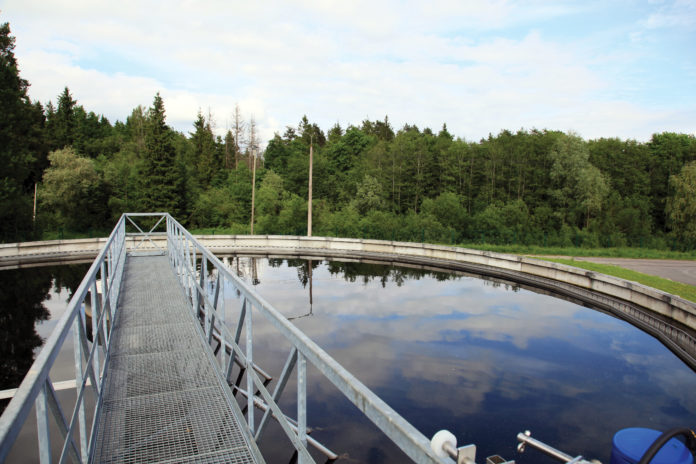When the Pew Charitable Trust’s publication Stateline took a look at struggling rural water and sewer systems around the country earlier this year, the story’s initial quote from a rural water system official in Mississippi stated, “We ain’t doing so hot.”
It is the same story for municipal rural water and sewer systems across the country and across the state. While financial struggles for these rural utility systems are not uniform, they are pervasive. For a number of years in North Carolina, there has been a strong correlation between those towns with financially troubled water and sewer utilities and those showing up on the Local Government Commission’s Unit Assistance List, meant to identify those that might require operational or bookkeeping assistance.
In 2019, the financial troubles of the Town of Eureka’s sewer system led to the suspension of its charter by the General Assembly and the LGC to take over its operations, with fears of similar situations in other towns are arising in the near future.
While these issues have long been on the radar of the state Treasurer’s Office, which oversees the Local Government Commission, and state regulators that oversee water and sewer infrastructure, state elected officials have begun to recognize the depth of this challenge as well.
Earlier this year, the General Assembly approved legislation establishing the “Viability Utility Fund” and set up a framework for beginning to assess struggling utility systems and try to determine the best solutions for each moving forward.
Both before and after that legislation was approved, NCLM staff, led by Legislative and Regulatory Counsel Sarah Collins, had been having discussions—individually and as part of a larger work group—with staff from the state’s Division of Water Infrastructure about the larger issues. Those discussions have continued as division head Kim Colson and his staff are now working to develop criteria to identify and rank the distressed utilities and how to proceed.
While the passage of the legislation should be viewed a positive step, legislators put just $9 million in the fund initially—a sum that would provide little or nothing for actual infrastructure improvements. Just a few years ago, the Division of Water Infrastructure estimated that water and sewer infrastructure needs in the state would total between $17 billion to $26 billion within a decade.
Gov. Roy Cooper, though, did recognize the depth of the need in his proposed budget from 2019 by including $800 million in a larger infrastructure bond proposal. Going into 2021, there is some optimism that legislators will consider a bond referendum, and that water and sewer needs will be a part of any conversation.
At the League, our Municipal Operations Consultants have been heavily involved in assisting towns that face these utility challenges, and trying to connect them with resources where possible.
The need is certainly real, and meeting it is vital for the state’s rural economy.
The Stateline article—which focused on North Carolina, Mississippi, New Hampshire, and California, and featured quotes and data provided by the League—noted how the COVID-19 pandemic has put further strains on these utility systems.
It cited figures from the National Rural Water Association estimating that small water and wastewater systems would lose $998 million in revenue by mid-July. In North Carolina, the state Utilities Commission reported in mid-June that 13.7 percent of customers were not paying utility bills and that delinquent payments totaled $252 million.
The article also focused on how rural communities have been facing decades of global trends of population, industry, and job losses. As those losses have occurred, property tax bases have contracted and customer payment bases for the utility systems have shrunk. As a result, maintenance of the infrastructure—the pipes, the pump stations, the treatment stations—has been deferred.
In North Carolina, while some state officials have sought to cast blame locally, the numbers tell a different story.
As late as the 1970s, three industries spread out across the state
in both rural and urban areas—tobacco, textiles, and furniture—
accounted for 20 percent of jobs. Overall, manufacturing jobs have dropped in the state from about 800,000 in the early 1990s to roughly 475,000 today. Tobacco-related jobs declined by 50 percent from 1992 to 2012.
While the state’s population has risen from 6.7 million in 1990 to 10.4 million in 2018, almost all of those gains have occurred in the state’s large metropolitan areas. Nearly half of the state’s municipalities have lost population in the previous decade.
As of 2018, employment in non-metro areas of North Carolina was still 5.6 percent lower than it was prior to the 2008 recession.
All these trends have created challenges for rural towns in the state, with some better equipped to withstand them than others. Among the most daunting of those challenges has been the upkeep of water and sewer utilities, vital to public health and to future economic success.
Over the coming months, North Carolina’s cities and towns are likely to see more strategies developed to address these challenges. Be assured, the League will be there to help work toward solutions in the best interest of all of member cities and towns.
















